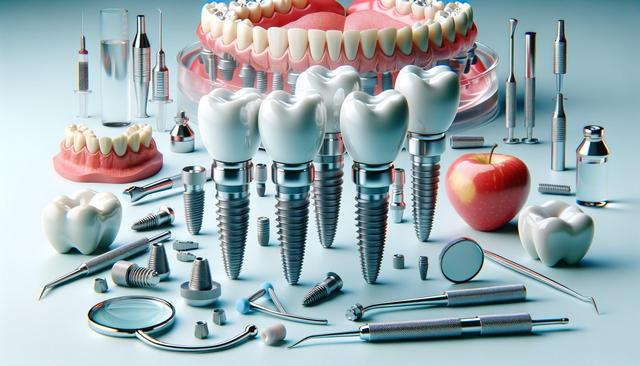
Understanding Dental Implants: A Long-Term Solution for Missing Teeth
What Are Dental Implants?
Dental implants are artificial tooth roots, typically made of titanium, that are surgically placed into the jawbone to support a replacement tooth or bridge. They serve as a sturdy foundation for fixed or removable replacement teeth that are designed to match your natural teeth. Unlike dentures or bridges, implants are integrated into the bone, which helps maintain facial structure and prevent bone loss. This integration process, known as osseointegration, allows the implant to function much like a natural tooth root.
Over the years, dental implants have become a widely used restorative treatment due to their durability and natural appearance. They can be used in several scenarios, such as replacing a single tooth, supporting a bridge for multiple missing teeth, or anchoring dentures for improved stability. Their versatility makes them an appealing solution for a broad range of dental needs.
Benefits of Choosing Dental Implants
One of the key reasons many individuals opt for dental implants is the range of benefits they offer compared to other tooth replacement options. These advantages include both functional and aesthetic improvements:
- Improved oral function, including clearer speech and more comfortable chewing
- Natural-looking results that blend with existing teeth
- Preservation of jawbone structure and prevention of bone deterioration
- Long-lasting performance with proper care and maintenance
- No need to alter adjacent healthy teeth, as in the case of bridges
In addition, dental implants can enhance self-confidence and quality of life. Many people find that being able to eat, speak, and smile without anxiety significantly boosts their overall well-being. They are particularly valued for their ability to remain secure and stable, providing peace of mind in daily activities.
The Dental Implant Procedure Explained
The process of getting dental implants typically involves multiple steps spread over several months. It begins with an initial consultation where a dental professional evaluates whether the patient is a good candidate. Factors assessed include oral health, bone density, and overall medical condition.
Once eligibility is confirmed, the procedure generally follows these stages:
- Surgical placement of the implant into the jawbone
- A healing period of several weeks to months for osseointegration
- Placement of an abutment, which connects the implant to the crown
- Attachment of the custom-made crown that completes the restoration
Throughout the process, patients are guided by their dental team to ensure proper healing and integration. While it may take time, the result is a secure, natural-feeling tooth replacement that can last for many years.
Who Is a Suitable Candidate for Implants?
While many individuals benefit from dental implants, not everyone is an immediate candidate. Ideal candidates are in good general and oral health and have sufficient bone in the jaw to support the implant. Gums must also be healthy, as periodontal disease can affect the success of the implant.
Other considerations include:
- Non-smokers or those willing to quit smoking, as smoking can hinder healing
- People free from chronic conditions that impact healing, such as uncontrolled diabetes
- Individuals committed to maintaining excellent oral hygiene and regular dental check-ups
In cases where bone loss has occurred, bone grafting procedures may be recommended to build up the jaw to a level suitable for implant placement. These additional steps can extend the treatment timeline but are essential for ensuring long-term success.
Aftercare and Long-Term Maintenance
Proper care is essential for the longevity of dental implants. Although they are resistant to decay, the surrounding gum tissue is still susceptible to infection and disease. Therefore, maintaining a consistent oral hygiene routine is crucial.
Recommended aftercare practices include:
- Brushing at least twice daily with a soft-bristled toothbrush
- Flossing around the implant area to remove plaque buildup
- Using antimicrobial mouthwash as advised by a dental professional
- Attending regular dental check-ups and professional cleanings
With proper maintenance, dental implants can remain functional and aesthetically pleasing for many years. Some individuals have had implants last for decades, making them a valuable long-term investment in oral health.
Conclusion: Is a Dental Implant Right for You?
Dental implants offer a reliable and natural-looking solution for replacing missing teeth. While the process involves a commitment of time and care, the benefits can be significant, particularly for those seeking a long-term improvement in function and appearance. If you’re considering your options for tooth replacement, discussing dental implants with a qualified dental professional is a good first step. Their insights can help determine whether this approach aligns with your oral health goals and lifestyle.


